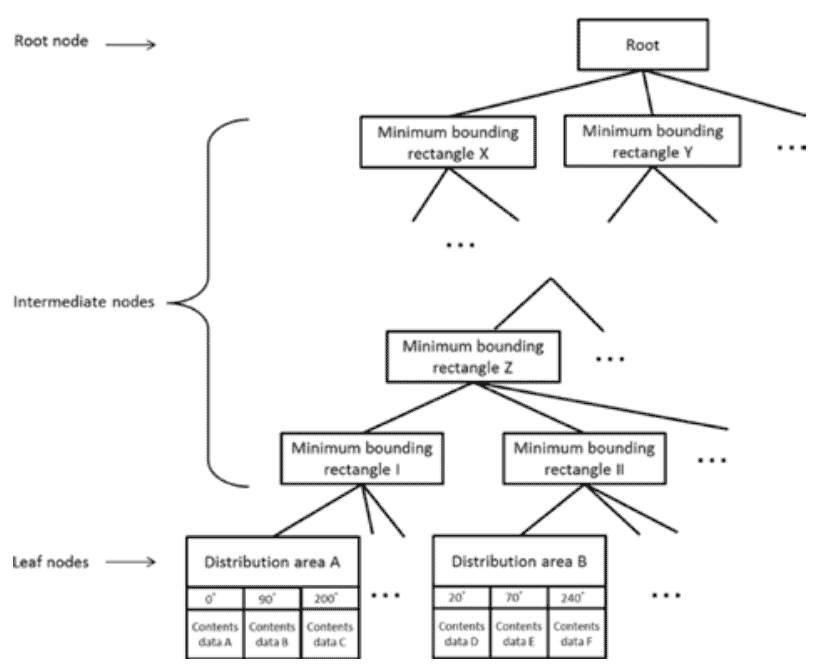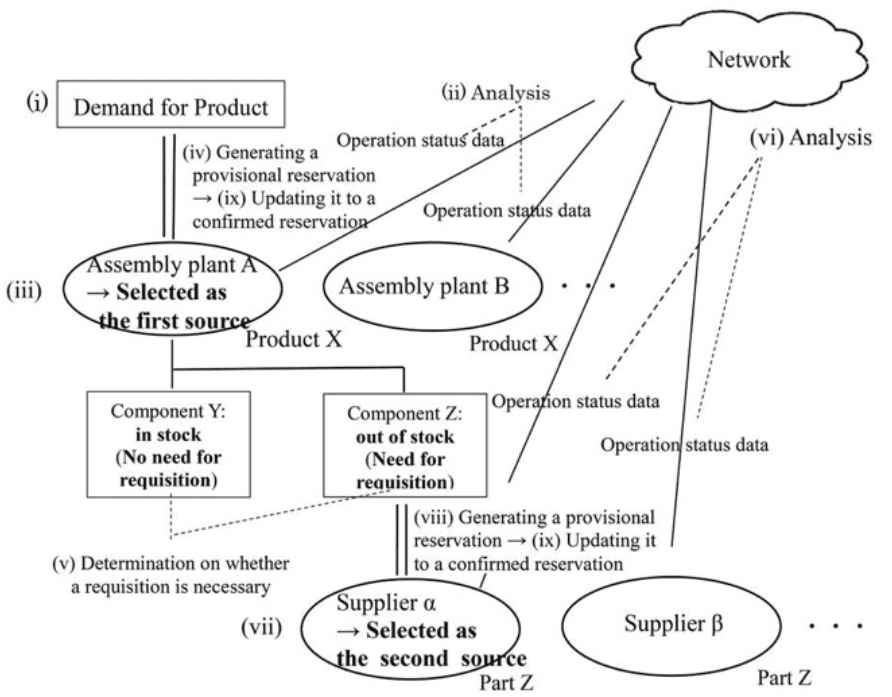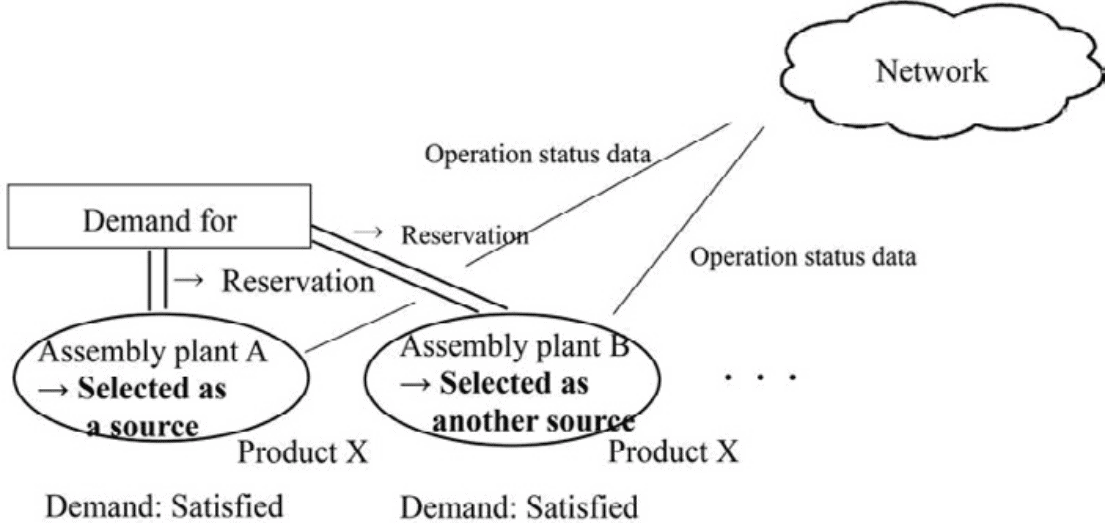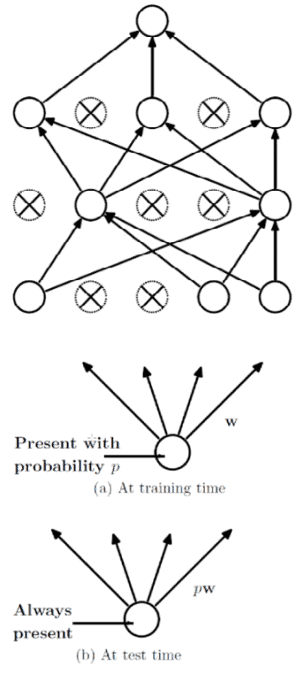
This is the third and final part of our article series where we provide a summary of the results of the recent study jointly conducted by the European Patent Office (EPO) and the Japan Patent Office (JPO) that aimed to provide patent applicants and practitioners with insights into how each office examines applications directed to computer-implemented/software related inventions. In this article we examine the cases contrasted for the offices’ approaches to inventive step.
The study can be found here, and herein references to “the study” refer to this document.
8 cases having 9 claims were examined for inventive step. Of these 8 cases, both offices were in agreement on 3 of them. We will examine these cases first.
The Cases Where There Was Agreement (Cases 2, 6 and 7)
Case 2
This case was taken from Annex B, Chapter 1, of the Japanese Guidelines and essentially relates to a tree-like data structure comprising different types of nodes and that is able to identify the location of a user (of a game machine) and the angle which they are facing, so that bespoke content is distributed to the user.
The claim recites a tree-structured are management data comprising leaf nodes, intermediate nodes, and root nodes, all of which are disclosed by prior art document D1 which relates to the delivery of bespoke content depending on the location of a user (but not based on the angle which a user is facing). Another prior art document, D2, discloses the processing of data containing the angle of a geographical surface (which can include land or a building) and sunlight information at various angles at the geographic area, so that sunlight information may be displayed on a computer for the surface at the given angle.
The below figure shows the tree-structured data (taken from the Japanese Guidelines, Annex B, Case 2-11, also found on page 41 of the study): Both offices found that the determining of the user’s angle, and the delivering of content based on that angle, involved and inventive step.
Both offices found that the determining of the user’s angle, and the delivering of content based on that angle, involved and inventive step.
The EPO[1] ruled that the problems addressed by both documents were different. Even if the skilled person were faced with D1, and if they were to consider D2, they would not be prompted to implement the sunlight adaptation technique into D1.
Case 6
This case was taken from Annex A, Chapter 5, of the Japanese Guidelines and concerns estimating the hydroelectric power generating capacity of a dam and has two claims. Claim 1 recites a method for using a neural network to output a power generating capacity at a future time based on a precipitation amount and water flow rates as inputs. Claim 2 recites that the input data further contained the temperature of the upper stream of the river.
Prior art document D1 discloses the method of claim 1 but using a regression equation model to calculate the power generating capacity, not machine learning, and does not disclose using temperature data as an input.
Unsurprisingly, therefore, both offices ruled claim 1 to lack an inventive step. The EPO views a neural network as an abstract model or algorithm that does not necessarily imply the use of any technical means (Guidelines G-II, 3.3.1). For a claim to a neural network to have technical character it must serve a technical purpose or must be adapted to a specific technical implementation. Whilst the claim does serve a technical purpose, since the claim solves exactly the same problem as the known regression model, the claim solves the objective technical problem of how to predict power generating capacity in an alternative manner which the EPO considered not obvious given the skilled person’s knowledge of trained neural networks.
However, both offices considered claim 2 to possess an inventive step. Using temperature as an input means that a more accurate estimation can be given which takes an increase of increase inflow rate due to meltwater into account, and therefore claim 2 represents a more accurate estimation compared to known systems (which the EPO viewed as technical). As the prior art does not disclose the correlation to temperature, it would not be obvious to the skilled person.
Case 7
The final case where there was agreement was provided by the EPO and recites a computer-implemented method for remotely controlling an electronic device. A remote controller has a touch screen displaying a first graphical user interface (GUI) and the electronic device displays a second GUI. The method comprises receiving, from the remote controller, touch input data comprising gestural input parameters describing a gestural trajectory input by a user. The touch input data is interpreted to determine a command appropriate for a current application context of the second GUI depending on whether the device is executing a first or a second application. The first and second GUIs are updated in response to the command.
A first prior art document, D1, discloses a method for remotely controlling a device. The method comprises receiving touch input data that is interpreted by the device as one of a number of GUI commands, and the GUI is updated in response to the command. A second prior art document, D2, discloses a dynamically variable virtual keyboard with command mapping that depends on a variable mode set by a user.
Whilst both offices agreed that the claim was inventive, the EPOs approach to this claim is interesting and worth some discussion.
There are three differences between this claim and D1 (being considered the closest prior art document): (i) the touch input data comprises gestural input parameters describing a gestural trajectory (D1 discloses key input parameters but not gestures); (ii) the touch input data is mapped to a potential command in a context where the context depends on whether the device is executing a first or a second application; and (iii) both GUIs are updated based on the command.
According to the EPO Guidelines for Examination (the “Guidelines”), G-VII, 5.2, novel features which do not have effects that are “synergistic” with one another do not “combine” to provide a single technical effect for an inventive step assessment. In these cases, the features are divided-up and the inventive step of each feature is separately assessed. This naturally entails different objective technical problems being posed since these are derived from the technical effects.
For feature (i) the EPO determined that the gesture trajectory input reflects a subjective user preference, solving the non-technical constraint of allowing gesture trajectory inputs instead of tap inputs. Thus, the objective technical problem was framed as how to allow for such inputs. Given that D1 already discloses a touch screen (technical means suitable for this purpose) feature (i) was judged to not involve an inventive step.
The EPO determined that the technical effects of features (ii) and (iii) were synergistic, these features combining to allow touch input data to be mapped to a command in a context-sensitive manner, and the subsequent adaptation of both GUIs.
Claims to GUIs can be difficult to successfully prosecute before the EPO as they can inherently comprise features that amount to presentations of information. However, the EPOs Guidelines state that such a feature does produce a technical effect if it “credibly assists the user in performing a technical task by means of a continued and/or guided human-machine interaction process” (Guidelines, G-II, 3.7). The EPO deemed this criterion to be met in this case for features (ii) and (iii) since, by virtue of the display of the first GUI on the remote controller, the user can provide inputs without sight of the device and thereby the user is assisted in controlling a remotely controlled device.
Based on this assessment, the objective technical problem was formulated as how to efficiently control a remotely controlled device which supports a plurality of applications.
The EPO considered that the skilled person would look to D2 when faced with D1. Since D2 teaches that a key-to-command assignment of a dynamic virtual keyboard is variable according to user-input, the EPO considered that it would be obvious for the skilled person to map the input parameters of D1 to different commands depending on context, and that this would anticipate feature (ii).
However, as neither D1 nor D2 teaches at a combined GUI adaptation (feature (iii)), the claim was considered inventive. Notably therefore (and as the study remarked), in the absence of feature (iii) the claim would lack an inventive step.
The Cases Where There Was Not Agreement (1, 3, 4, 5, and 8)
Case 1
This case was taken from Annex A, Chapter 5, of the Japanese Guidelines and contains a claim to a computer-implemented method for managing a supply chain. According to the method, a demand for a product is received, a first source is selected (that can satisfy the demand) and a provisional reservation for a supply time from the first source is generated. It is determined whether any component is needed for the first source to implement the demand and, if a component is needed, a second source is selected that can satisfy the requisition of the component. The provisional reservation is then updated (that acquiring the component is not necessary or that the reservation has been generated).
The below figure shows a drawing in the application (taken from the JP Guidelines, Annex A, Case 26, also found on page 37 of the study):

Prior art document D1 discloses a method comprising selecting a source to satisfy a demand for a product, selecting another source if the demand is not satisfied by the initial source, and then generating reservations for the sources. Prior art document D2 discloses a method comprising identifying the component parts necessary for manufacturing a product and determining whether stock levels of each component part are sufficient for satisfying the demand for that product. Where the stock is determined to be insufficient, possible sources of the component parts are indicated to satisfy the demand.
The below figure is of D1 (taken from the JP Guidelines, Annex A, Case 26, also found on page 38 of the study):

The JPO ruled that the claim is inventive. D1 does not take into account a requisition for any component part of a product nor does D1 generate and update a provisional reservation. Whilst the first of these features was considered obvious (in view of D2), the latter feature was considered inventive.
The EPO on the other hand did consider all features of claim 1 to relate to a non-technical administrative scheme for managing a supply chain (which amounts to a method of doing business) and the claim was deemed to ack an inventive step on this basis. It was also remarked that the claim could also be regarded as a (computer-implemented) method of performing amental act.
In this example, and as the reader will know, computer-implementing methods which are excluded (such as for being business methods etc.) is not sufficient to confer an inventive step before the EPO.
Case 3
This case was taken from the Guidelines (G-VII, 5.4.2.1) and contains a claim to a method of facilitating shopping where a user selects two or more products to be purchased and a mobile device transmits data on the selected products and the device location to a server. The server accesses a database of vendors to identify those that are offering the selected products and then determines an optimal shopping tour for purchasing the products by assessing a cache memory in which optical shopping tours were stored.
Prior art document D1 discloses the determination, from a database, of a vendor nearest a user that sells a selected product. Prior art document D2 discloses a travel planning system for trips that lists places to visit by accessing a cache memory storing the results of previous queries.
The JPO considered the claim to be inventive since neither document disclosed two or more products, or a database of vendors, or an optimal tour.
The EPO acknowledged the novel features of (i) a user selecting two or more products, (ii) an optimal shopping tour for purchasing the two or more products, and (iii) the optimal shopping tour is determined by a server.
Features (i) and (ii) were considered non-technical due to relating to business concepts, but feature (iii) was acknowledged to be technical (conferring the technical effect of enabling rapid determination of an optimal shopping tour by accessing previous requests from a cache memory).
Much like the skilled person, another fictitious entity – the “notional business person” – has been established through EPO case law and if the essential idea of the invention lies in a non-technical field (e.g. one excluded by Article 52(2) EPC) then the objective technical problem amounts to a specification of requirements that any implementation must meet (T 1463/11). It is this “notional business person” that hands this “requirements specification” to the skilled person and asks them to implement it.
Taking the claim of Case 3 as an example, features (i) and (ii) are given to the skilled person, in the form of a requirement specification, the objective technical problem being formulated as how to modify D1 to technically implement features (i) and (ii) in an efficient manner.
The EPO ruled that it would have been obvious for the skilled person to adapt the mobile device of D1 to enable the user to select two or more products instead of a single product, and to assign the task of determining the optimal shopping tour to the server. To efficiently implement these features, the skilled person would look to D2 which discloses using cache memory storing previous queries, and also anticipate feature (iii).
Hence, the EPO concluded that the claim does not possess an inventive step. This case is an interesting example since technical feature (iii) was considered anticipated by virtue of the skilled person implementing the requirements specification, which was based on the objective problem formulated from other features.
Case 4
This case was taken from the Guidelines (G-VII, 5.4.2.2) and contains a claim to a computer-implemented method for brokering offers and demands for transporting freight. The method claim recites the steps of receiving transportation offers/demands from users and information on the current location of those users. Upon receiving a new offer/demand request, the method verifies whether there are any previous offers/demands that are unsatisfied and that can respond to the new request. If so, then the previous and current offers/demands for which the current locations of both users are the closest is selected (otherwise the new request is stored).
Again, illustrating the contrasting approaches of both offices, the JPO considered the state of the art (which was considered to comprise a method of order management in which a server computer receives location information from GPS terminals) and ruled that the claim was inventive. In particular, the claim conferred the advantageous effect of brokering offers and demands that have not yet been realized.
However, as for Case 1, from the EPOs standpoint, such a claim is a business method and is non-technical per se and is therefore excluded. That the claim relates to a computer-implemented business method means that the only difference between the claim and the prior art, from the point of view of an inventive step assessment, is that the steps are computer-implemented. The objective technical problem is therefore one of how to adapt the prior art to implement the method of the claim – which the skilled person is given (by the notional business person) in the form of a requirements specification. The EPO therefore considered the claim to lack an inventive step on this basis.
Case 5
This case was taken from the Guidelines for Examination (G-VII, 5.4.2.3) and contains a claim to a system for the transmission of a broadcast media channel to a remote client over a data connection. The system comprises means for storing an identifier of the remote client and an indication of an available data rate of the data connection to the remote client. The system comprises means for determining a rate at which data is to be transmitted based on the available data rate, and means for transmitting data at the determined rate. The claim recites that the available rate is lower than the maximum data rate, since customers may wish to choose to pay lower amounts to receive lower bit rate transmissions, even though their line is capable of receiving a higher bit rate. In this way, the quality of service delivered to clients is determined by what was purchased rather than the maximum quality available.
Prior art document D1 discloses a system for broadcasting video to the set-top boxes of subscribers, having a database storing identifiers and the maximum data rate to each subscriber’s computer and means for transmitting video at the maximum data rate.
The JPO considered the claim to be inventive since there was no suggestion in the prior art that the data rate could be lower than the maximum.
The EPO considered the differences between the claim and D1 to be (i) that an indication of an available data rate (being lower than the maximum) is stored, and (ii) that the available data rate is used to determine the rate at which data is transmitted.
If the claim is a “mixed-type” invention (having a mix of technical and non-technical features) and relates to an aim to be achieved in a non-technical field then the aim may appear in the formulation of the problem to be solved (Guidelines, G-VII, 5.1 and 5.4 ). Such is the case for this claim. As stated above, the purpose of these features (which was mentioned in the description) is that a customer can choose between several data rates based on price. The EPO ruled that this amounted to a non-technical pricing model, thus falling within the excluded subject matter set forth in Article 52(2) EPC. As such, the objective technical problem was formulated as how to implement in D1 a system that allows a customer to choose to pay a lower amount for a lower quality of service. The EPO ruled that given the task of implementing such a pricing model, the claim is obvious to the skilled person because the rate purchased by a subscriber can only be lower or equal to the maximum rate.
This case illustrates one where the features are prima facie technical but due to the features contributing to a non-technical purpose.
Case 8
The final case was provided by the EPO and contains a claim to a computer-implemented method of training a neutral network including neurons. Each neuron is associated with weights and a respective probability of being disabled. A plurality of training inputs are obtained and, for each training input, the following steps are performed:
- one or more neurons are selected based on their probability;
- disabling the selected neurons;
- processing the training input to generate a predicted output; and
- adjusting the weights based on comparing the predicted output with a reference value.
The claimed invention is a method of “drop out” according to which neutrons are selectively disabled during the training phase to prevent “overfitting” (where the model becomes too good at recognizing a specific data set thereby losing its generality). According to first and second embodiments, neurons are disabled with a probabilities of 0.5 and 0.2 (in other words, they are active 50% or 80% of the time) during the training.
The below figure is taken from page 60 of the study:

The only prior art in this case was a general-purpose computer.
Based on this prior art, the JPO concluded that the claim is inventive since the prior art does not disclose essentially the entire method (if the prior art disclosed “drop out” then the conclusion may be different).
Despite the generality of the prior art, the EPOs assessment concluded that the claim lacks an inventive step. As stated above for case 6, to be inventive the claim must produce a technical effect by its application to a field of technology and/or by being adapted to a specific technical implementation (Guidelines G-II, 3.3.) and for claim 1 the EPO ruled that neither criterion applies. Therefore, the differences between the claim and the closest prior art are the method steps, but since they are non-technical, they cannot confer an inventive step.
Summary and Conclusion
We consider these cases to represent the most interesting portion of the study. Not only do they show how the EPO and JPO can conclude differently on inventive step, but these cases demonstrate some of the nuances of the EPO’s inventive step analysis. While applying the steps of the problem and solution approach can appear simple at first glance, as some of the above cases illustrate, various approaches have emerged from EPO jurisprudence that may mean that prima facie technical features are not, in fact, considered inventive when the right steps are applied. For applicants wishing to apply for patent protection in Europe, we consider that knowledge of the various tests applied by the EPO as part of their problem-solution assessment is important to ensure that the claims are compliant with Article 56 EPC.
This is for general information only and does not constitute legal advice. Should you require advice on this or any other topic then please contact hlk@hlk-ip.com or your usual Haseltine Lake Kempner advisor.
